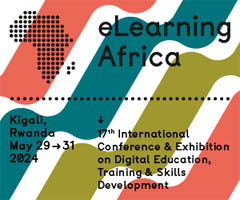Don't forget instructional design completely
 London (UK), May 2012 - (by Bob Little) The launch of the much-heralded Storyline from the Articulate stable increases the opportunity for almost anyone to produce technology-delivered learning materials. In many ways, this puts the 'traditional' skills of the professional instructional designer - a profession even older than the learning technology industry - under even further pressure.
London (UK), May 2012 - (by Bob Little) The launch of the much-heralded Storyline from the Articulate stable increases the opportunity for almost anyone to produce technology-delivered learning materials. In many ways, this puts the 'traditional' skills of the professional instructional designer - a profession even older than the learning technology industry - under even further pressure.
Instructional design (ID) was used a great deal in the 1980s. It then dropped out of favour but, by the turn of the century, in the USA - at least - there were professors of ID.
Best practice in terms of instructional - or learning - design:
- is based on identified learning needs,
- is related to organisational needs,
- is based on clearly defined objectives,
- effectively structures and sequences content,
- chooses the appropriate delivery media and
- provides feedback and assessment.
Basically, "we've got the technology and can do amazing things". Yet merely possessing the technology doesn't guarantee that the learning materials it helps to develop and deliver are amazingly effective. Unfortunately, the technology also allows us to do unhelpful and unproductive things in terms of learning. Although rarely recognised as such, learning technologies are really the accessory. It is the learning that should come first. The real difference between effective and ineffective learning materials is the ID involved.
These issues and tensions between ID and the technology that delivers the learning materials are not new.
A short history of learning technologies and ID (1974 to date)
In the UK, between 1974 and 1977, there was the Government-funded National Development Programme in Computer Assisted Learning (NDPCAL). In the 1970s, Barclaycard also developed technology delivered learning programmes. The decade was characterised by mainframe delivery and pump-priming by the Government.
The 1980s saw the advent of micro-computers. These allowed training to be done anywhere but trainers lost the central control of training materials. The National CBT Forum - later known as the Forum for Technologies in Training (which merged with the British Learning Association to form the British Institute of Learning and Development (BILD) - was founded in 1982.
"Project Author" began in 1983/84 and then there was the advent of laser disc and interactive video. This technology used lots of kit, took up a great deal of space and instructional developers found themselves working alongside video producers. These video producers dominated the instructional designers and the video element of the resulting programmes outweighed the learning.
The 1990s were the decade of multimedia computers, CD-ROMs, the internet, intranets and online learning. There was amazing technology, coupled with atrocious ID.
In the 2000s, technology - especially delivery technology - continued to develop rapidly and, by the end of the decade, mobile learning was well established as an additional and complementary "learning technology". Rapid authoring tools were also well established - and these enabled a wider range of people, such as subject matter experts, as well as specially trained, professional instructional designers to produce learning materials.
Those who still champion ID would argue that there's a difference between being able to do something and being able to do that thing well. Of course - as ever, especially in difficult economic times - there's the question of whether those whose decision it is are prepared to spend money to have things done well.
For over 20 years, Bob Little has specialised in writing about, and commentating on, corporate learning - especially elearning - and technology-related subjects. His work has been published in the UK, Continental Europe, the USA and Australia.
You can contact Bob.









